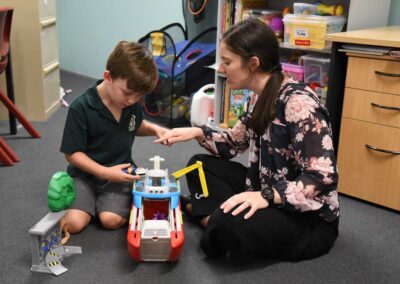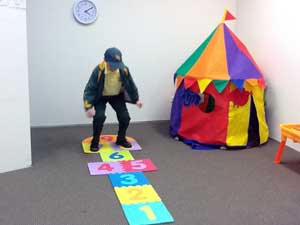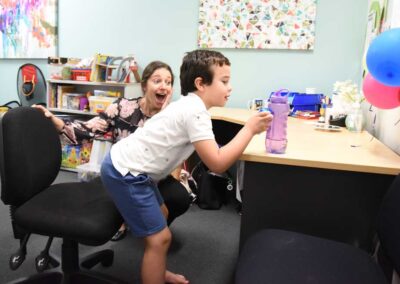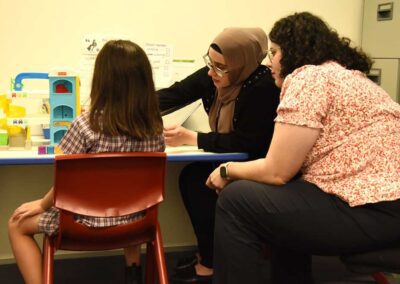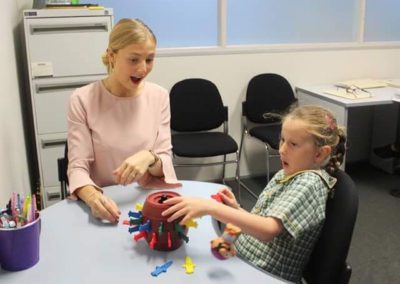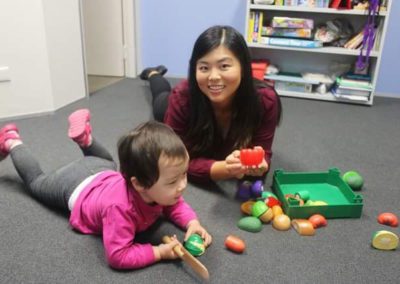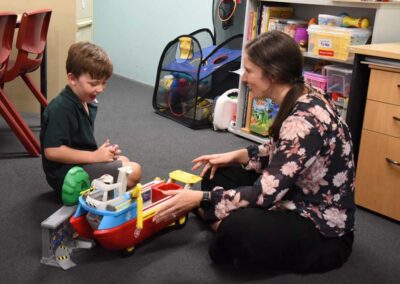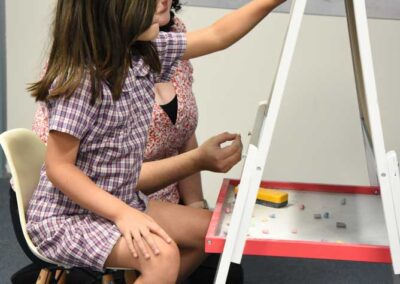Parenting a child with Attention Deficit Hyperactivity Disorder (ADHD) can be challenging, but with the right support and strategies, it’s possible to help your child thrive. ADHD is a neurodevelopmental disorder characterised by difficulties with attention, hyperactivity, and impulsivity and it affects around 1 in 20 children in Australia. As a parent, understanding how to support your child is crucial for their well-being and success in school. Here are some effective ways to support a child with ADHD and help you to implement strategies to use at school and at home.
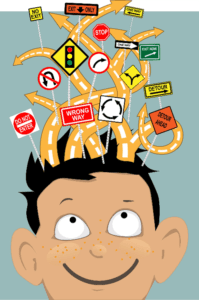
But first, what is ADHD?
Before delving into some management strategies, it’s essential to have a basic understanding of what ADHD is. ADHD is not simply a matter of being easily distracted or hyperactive; it’s a complex neurological condition that affects a child’s ability to focus, regulate their impulses, and manage their behavior. This makes it harder for your child to listen to (and follow!) your instructions, stay on task and stay in the same spot, even if they are trying their best. Your child is not simply being ‘lazy’ or ‘not listening’ – even though it may feel like it at times.
How can I create a supportive environment?
One of the first steps in supporting a child with ADHD is creating a supportive environment at home. This includes:
1. Establishing Routines
Children with ADHD benefit from structure and predictability. Establishing daily routines for meals, homework, and bedtime can help them feel more organized and secure. For example, “It’s 4:15. That means it’s homework time.”
2. Minimizing Distractions
Reduce distractions in the home environment by creating designated study areas and minimizing clutter. Limit screen time and noise, especially during tasks that require concentration. For example, your child might have their own desk and chair that is separate from yours in a quiet room of the house.
3. Encouraging Physical Activity
Regular physical activity can help children with ADHD manage their energy levels and improve focus. Encourage outdoor play, sports, or activities like yoga or martial arts. This might look like joining a soccer team and going to training on Wednesday afternoons before attempting homework.
4. Setting Clear Expectations
Be clear and consistent with your expectations for behavior and tasks. Break tasks into smaller, manageable steps, and offer praise and encouragement for progress. For example, “It’s time to get out your spelling homework.” is clearer than “You should be doing your homework now”.
5. Promoting Healthy Habits
Ensure your child gets enough sleep, eats a balanced diet, and engages in stress-reducing activities like mindfulness or relaxation techniques. This might look like doing kids yoga on YouTube or having a scheduled family walk time.
What supportive strategies can I use?
In addition to creating a supportive home environment, there are several strategies you can use to help your child with ADHD succeed.
1. Utilize Visual Aids
Visual aids such as charts, calendars, and checklists can help children with ADHD stay organised and remember tasks. Use color coding and visual cues to reinforce routines and schedules. For example, creating a diagram of what they need to do when they get home from school might include putting their bag away, putting their shoes in the cupboard and putting their lunch box in the sink.
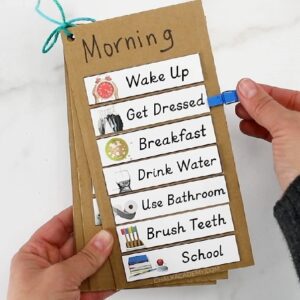
2. Provide Structure and Predictability
Use timers or alarms to help your child transition between activities and stay on task. Break tasks into smaller, manageable chunks and provide regular breaks to prevent overwhelm. For example, a 10-minute alarm may help them know how much time to spend on each homework subject (10 minutes for math and 10 minutes for spelling).
3. Use Positive Reinforcement
Focus on praising your child’s efforts and progress, rather than solely on their mistakes or shortcomings. Offer rewards for completing tasks or demonstrating positive behaviors. Giving your child a high five for completing all their spelling words or making an agreement that if they do their math work 5 days of the week, they get a scoop of ice-cream are great examples of this.
4. Teach Self-Regulation Skills
Help your child develop self-regulation skills by teaching them techniques such as deep breathing, mindfulness, or progressive muscle relaxation. Encourage them to identify and express their emotions in constructive ways. Having a squishy toy or a recording of a mindfulness audio nearby will make it easy for them to access it independently and act as a visual reminder.
5. Collaborate with Teachers
Maintain open communication with your child’s teachers and school staff. Work together to develop strategies and accommodations that support your child’s learning needs in the classroom. They may have some great tips (or even things to avoid) that you could try at home.
6. Consider Professional Support
Depending on your child’s needs, consider seeking support from mental health professionals, such as therapists or behavioral specialists. We can provide additional strategies and interventions tailored to your child’s unique challenges.
You can also check out ADHD Australia for resources and support groups.
Remember, every child is different, so don’t be afraid to experiment with different approaches until you find what works best for your child. With your love and support, they can overcome obstacles and succeed in both academics and life.

